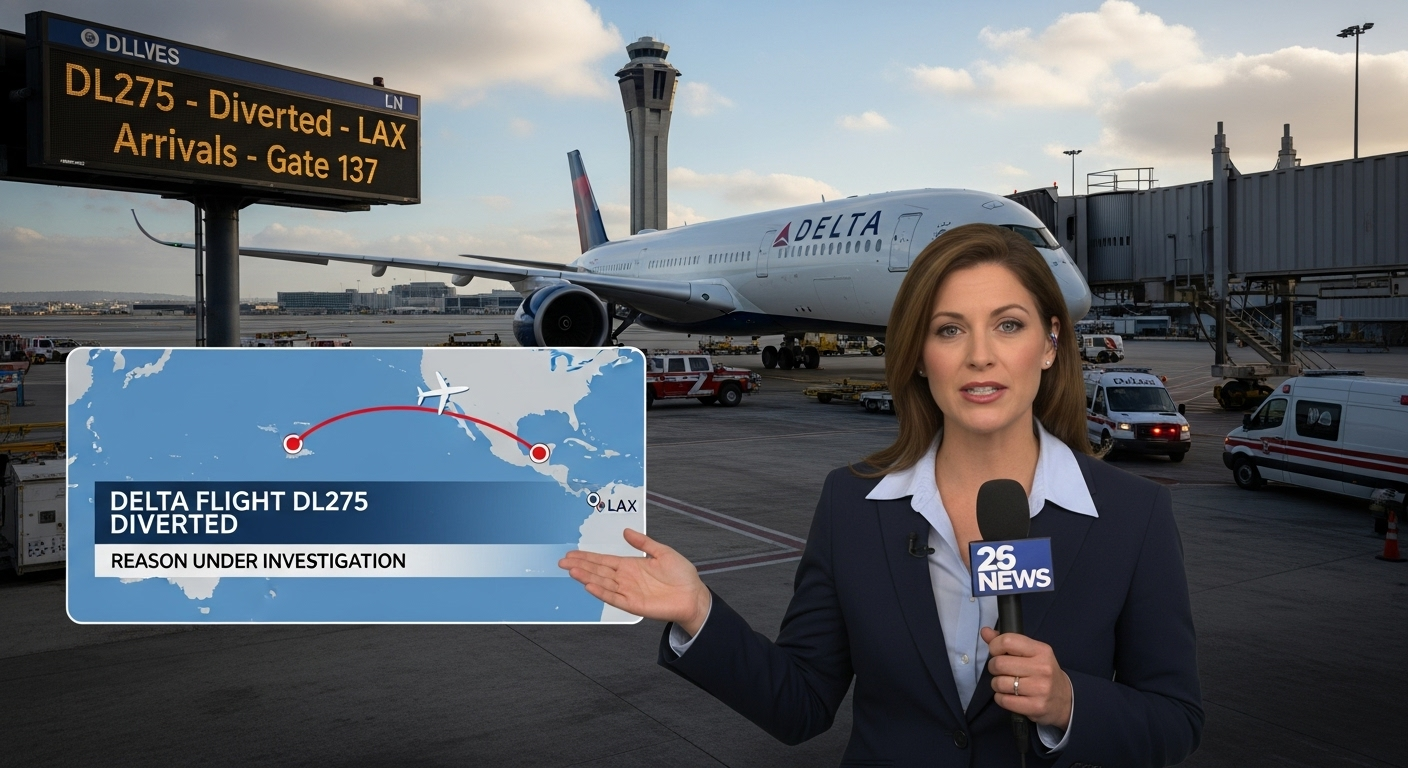Top-selling headlines were made by Delta Flight DL275 Diverted LAX when the unexpected detour occurred on what looked like a rather ordinary route: Incheon International Airport (ICN) to Hartsfield-Jackson Atlanta International Airport (ATL). Delta Flight DL275 was diverted to LAX, something that left the passengers and other aviation lovers wondering the same question and wondering why Boeing 777 was diverted.
This article dives deep into the reasons, implications, and broader context behind the diversion, offering an SEO-optimized, informative breakdown for travelers, frequent flyers, and aviation trackers alike.
Understanding Mid-Flight Diversions: How and Why They Happen
Mid air diversions are not very common yet important steps taken in ensuring safety of passengers and crew. Although most people may jump to the mechanical side, the reasons are always among the medical emergencies, weather peculiarities, or operational limits.
In the Delta Flight DL275, the credible sources point out that there was a medical emergency on board which was necessitating the need to attend to it, and hence the pilots decided to divert the flight to the nearest important airport, which was LAX.
Flight Path Analysis and Emergency Landing Protocol
What Triggered the Diversion Decision?
About half way across the pacific ocean, the flight crew had discovered a passenger medical emergency and this had to be handled before getting to Atlanta. Whereas most the Delta flights have equipped medical kits and can receive health assistance through the ground based health services through MedAire, the captain takes the last decision when it comes to declaring an emergency landing.
LAX was the most feasible diversion point because of its adequate infrastructure, facility to provide medical attention and its location relative to the point the flight was at a given moment.
Why LAX Was Chosen Over Other Airports
Although an airport such as San Francisco International (SFO) or Salt Lake City (SLC) in theory would do, but since LAX is also a Delta hub, then it is perfect. Their airport would be able to accommodate a Boeing 777 and could avail the ground support team of Delta so that the aircraft could have been partially serviced, refueled and primed to fly once the medical situation had been addressed.
Read: Best Theme Parks in the United States for Every Age Group
Passenger Experience and Airline Response
Onboard Announcements and Cabin Crew Reaction
It was reported that the crew continued with normal procedures, even though they ensured that people were calm. It was announced to the passengers on-board that the flight would have to turn around because of a health emergency, and there were periodical updates.
The customer service team at Delta was quick to liaise with LAX hospital personnel and the sick passenger landed well in a nearby hospital.
Compensation and Rebooking Options
After landing and being able to take off again, Delta could help passengers to rebook, in case they wanted to. There were some re-arranged flights, as well as offered hotel accommodations to others who had severe delays.
This is in correlation with the customer-first policies of Delta, which is frequently referred to by the aviation industry.
Travel Implications and Operational Adjustments
Aircraft Maintenance and Crew Rest Protocols
Although it occurred mainly due to medical reasons, diverted flights, including Delta Flight DL275, must also comply with FAA standards of hours worked by a crew and aircraft inspection. LAX ground crews arranged to have the craft given the okay to continue to operate. Pilots too were recalled to ascertain that they were capable of continuing the rest of the flight legally and safely.
Future Flights and Lessons Learned
Diversions are examined by the airlines. Here, this accident reminds of high efficiency of mid-air medical convenience, especially on crossing long-range airplanes over far oceanic territories.
Delta’s Track Record with Diversions
Delta Air Lines is regarded as one of secure and customer-friendly airlines of U.S. There are few examples of such as a DL275 LAX diversion which tends to occur in a professional manner with the least amount of disruption.
The airline has come right back with health tech, crew training and planning backup scenarios so that the need to divert is kept to an absolute minimum and passenger welfare is a priority.
Conclusion
Why was Delta Flight DL275 diverted down to LAX? That question would be solved in the light of safety, responsiveness, and medical priority. Although it happened unexpectedly, the misdirection was speedily addressed and shows the dynamics of overseas flying. To the fans of Delta operations and prospective travelers on long journeys, this occurrence is one of the reminders that the air carrier is serious about the safety of the passengers–to an extent of changing the direction of air travel.
FAQs
1. Was anyone seriously hurt on Delta Flight DL275?
Although the airline has not released any specific details of medical nature, it is reported that the passenger needed an immediate attention, which is what led to unscheduled landing at LAX.
2. How often are Delta flights diverted mid-route?
Delta flies thousands of flights every day and diversions are quite unusual, usually they occur because of weather or medical issues.
3. Did passengers face delays after the diversion?
Other passengers were issued with layovers or even rebooking although Delta had to assist them with hotel accommodation and food vouchers where need be.
4. Can passengers get refunds for flight diversions?
The usual case is not offering the refund expecting the passenger not to reach the final destination. Nevertheless, Delta tends to give goodwill compensation under exceptional circumstances.
5. Where can I track future Delta flights for updates?
To track and get updates in real-time regarding any Delta-won service you can use such tools as FlightAware or the official app by Delta.



